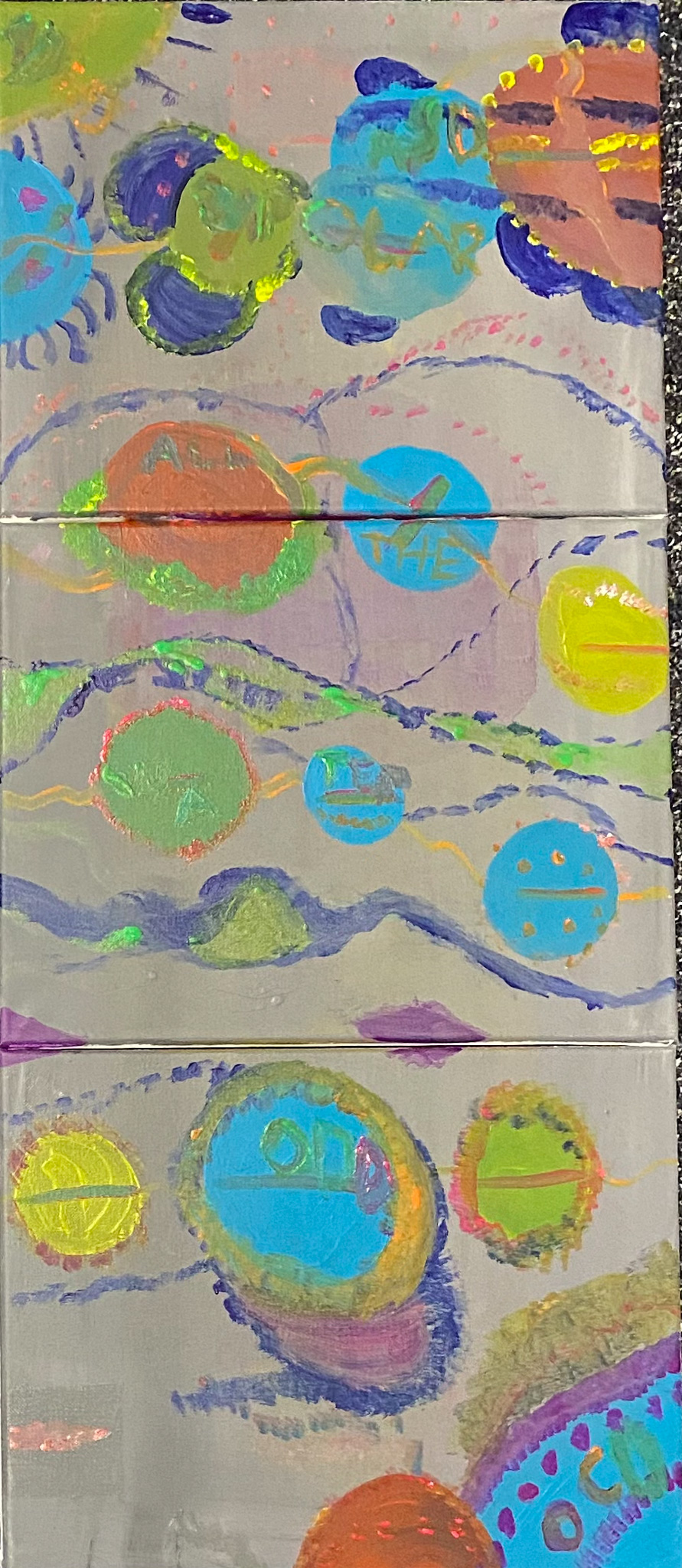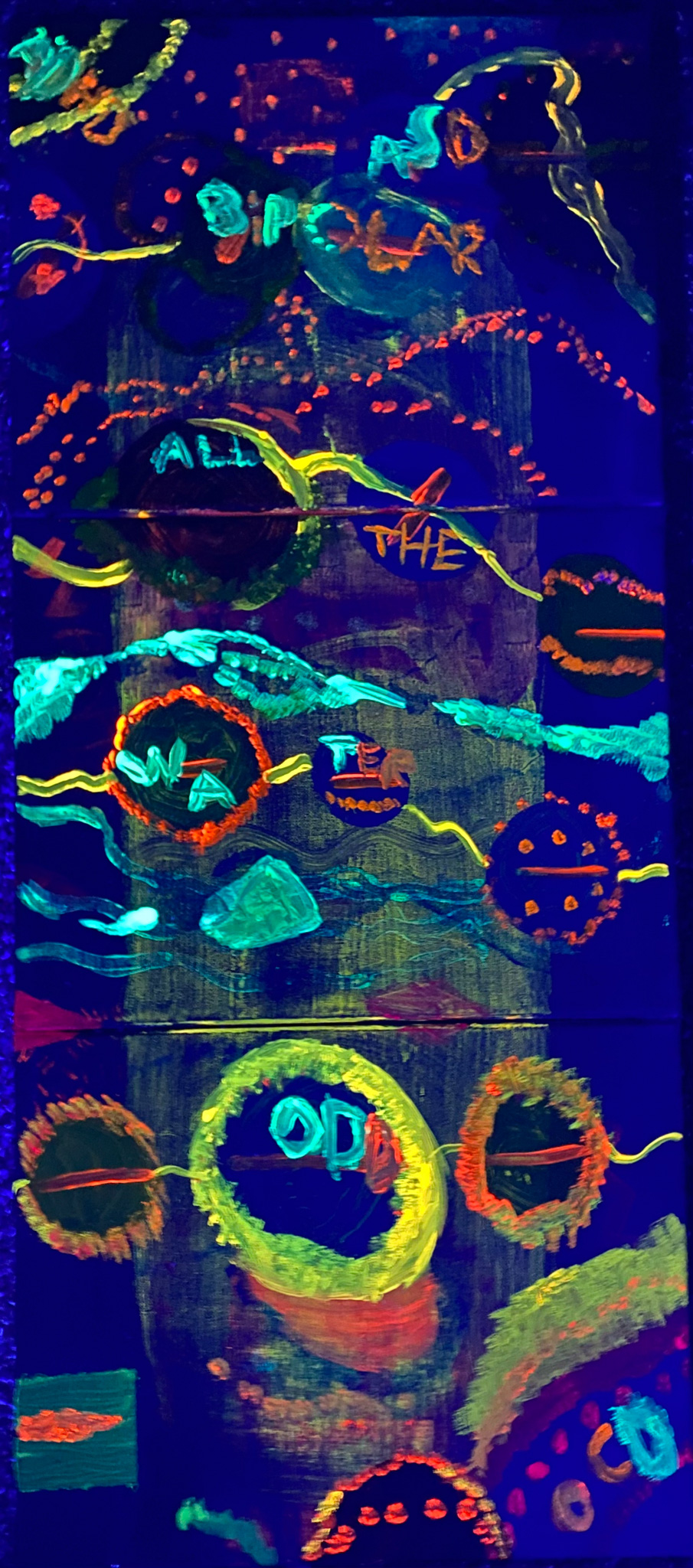

Disabled Space is an artwork that combines vibrant colors, dynamic textures, and interactive blacklight effects to delve into themes of identity, resilience, and the experience of living with a disability. This blog post explores its connections to renowned artists, artistic movements, and its potential as an educational and therapeutic tool.
Artistic and Movement Connections
The circular motifs and vibrant colors echo Yayoi Kusama’s polka dots, symbolizing infinity and interconnectedness, while the emotive layering of text and imagery reflects Jean-Michel Basquiat’s exploration of struggle and identity. These influences merge with Abstract Expressionism’s focus on non-representational forms and emotional depth, seen in the artwork’s dynamic strokes and vivid hues. Furthermore, Disabled Space aligns with disability studies by highlighting often-hidden layers of experience, challenging viewers to reassess inclusion and visibility.
Educational and Therapeutic Applications
As a teaching tool, Disabled Space sparks discussions on inclusivity and identity, with its glowing blacklight feature encouraging new perspectives. The textural and layered design also aligns with art therapy practices, fostering reflection and healing by uncovering deeper truths.
Conclusion
By integrating artistic innovation, movement philosophies, and educational insights, Disabled Space invites viewers to explore the complexities of identity and resilience while fostering greater empathy and understanding.
References
- Munroe, A. (1998). Love Forever: Yayoi Kusama, 1958–1968. Los Angeles County Museum of Art.
- Hoban, P. (1998). Basquiat: A Quick Killing in Art. Penguin Books.
- Dempsey, A. (2002). Styles, Schools, and Movements: The Essential Encyclopaedic Guide to Modern Art. Thames & Hudson.
- Siebers, T. (2010). Disability Aesthetics. University of Michigan Press.
- Eisner, E. W. (2002). The Arts and the Creation of Mind. Yale University Press.
- Malchiodi, C. A. (2007). The Art Therapy Sourcebook. McGraw Hill.
Leave a Reply